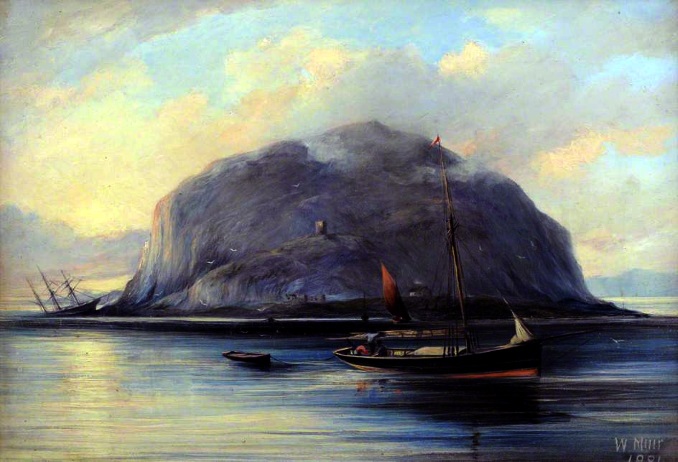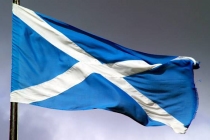Ailsa Craig - Natures Granite Masterpiece

Ailsa Craig (Scottish Gaelic: Creag Ealasaid or Aillse Creag) rises out of the seas of the outer Firth of Clyde like a magnificent monster emerging from the deep. Climbing to a height of 1,109 ft (338 m) it lies nine miles offshore from the coast of South Ayrshire (Scottish Gaelic: Siorrachd Inbhir Àir a Deas) in the west of Scotland. Ailsa Craig geologically is all that remains of a volcanic plug from an extinct volcano and is 2.5 miles (4 km) in circumference.
It lies approximately halfway between Glasgow (Scottish Gaelic: Glaschu) and Belfast (Irish: Béal Feirste). This rock stood as an important milestone for those Irish who emigrated to Scotland in the nineteenth century looking for work. Ailsa Craig is designated as a Site of Special Scientific Interest and Special Protection Area because it supports 73,000 breeding seabirds and is now a bird sanctuary, leased by the RSPB until 2050. Now offering a home and protection to birds, in the past it had also acted as a haven for Roman Catholics during the Scottish Reformation in the sixteenth century.
Buildings that still survive on the Ailsa Craig are a lighthouse, an old quarry manager’s house that is now used by the RSPB and the ruins of a Ailsa Castle built by the Hamilton family in the late 1500s as a defence from King Philip II of Spain. The island is famous for a particular type of granite which is used to make stones for the sport of curling. Curling was invented in medieval Scotland and involves players sliding stones on a ice towards a target area which is divided into four concentric circles.
This extract if from - “A description of the Western Isles of Scotland called Hybrides, Compiled by Donald Munro, Dean of the Iles, 1549” - taken from Carrick, Scotland. Beyond the Tourist Guides - James Brown. Obtained from Carrick Councils’ Forum (2009):
Northwest fra this Isle of Man 60 miles of sea lyes Ellsayan Isle of ane mile lang, qultarin is ae heich hill round and roche, and als abundant of Sol Geese, and ane small point of ane Ness quhairant the Fishe-Coats lyes: for the same Isle is very good for fishing, sic as Keiling, Ling and other white fishes. Forenent this Isle lyes Carrick on the south-east part, and Lands Kintyre on the west and northwest part; the said Ellsay being marchand midsea betwixt the said Markes
Ailsa Craig obviously made a big impact on Donald Munro (1526–1574). In 1563 he visited most of the islands on the west coast of Scotland and wrote a manuscript account of them which is regarded as a valuable historical account. It is easy to see why he was so impressed. Your eyes are drawn to the Ailsa Craig as you journey along the Ayrshire coastline. Sometimes standing out strong and clear against the backdrop of a deep green sea and pale blue sky. Sometimes dark, brooding and mysterious as its impressive form looms out of a grey Scottish mist. You don’t have to stand on it to appreciate its glory but it is worth visiting and can be reached by boat only from Girvan (Scottish Gaelic: Inbhir Gharbhain) or Campbeltown (Scottish Gaelic: Ceann Loch Chille Chiarain) during the summer months.
- Scottish
- English
- Log in to post comments





